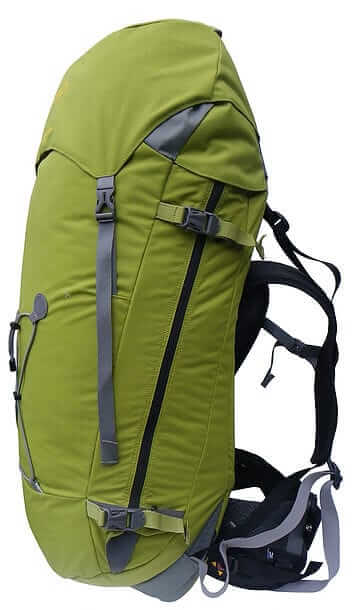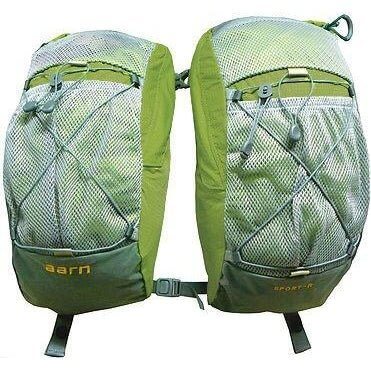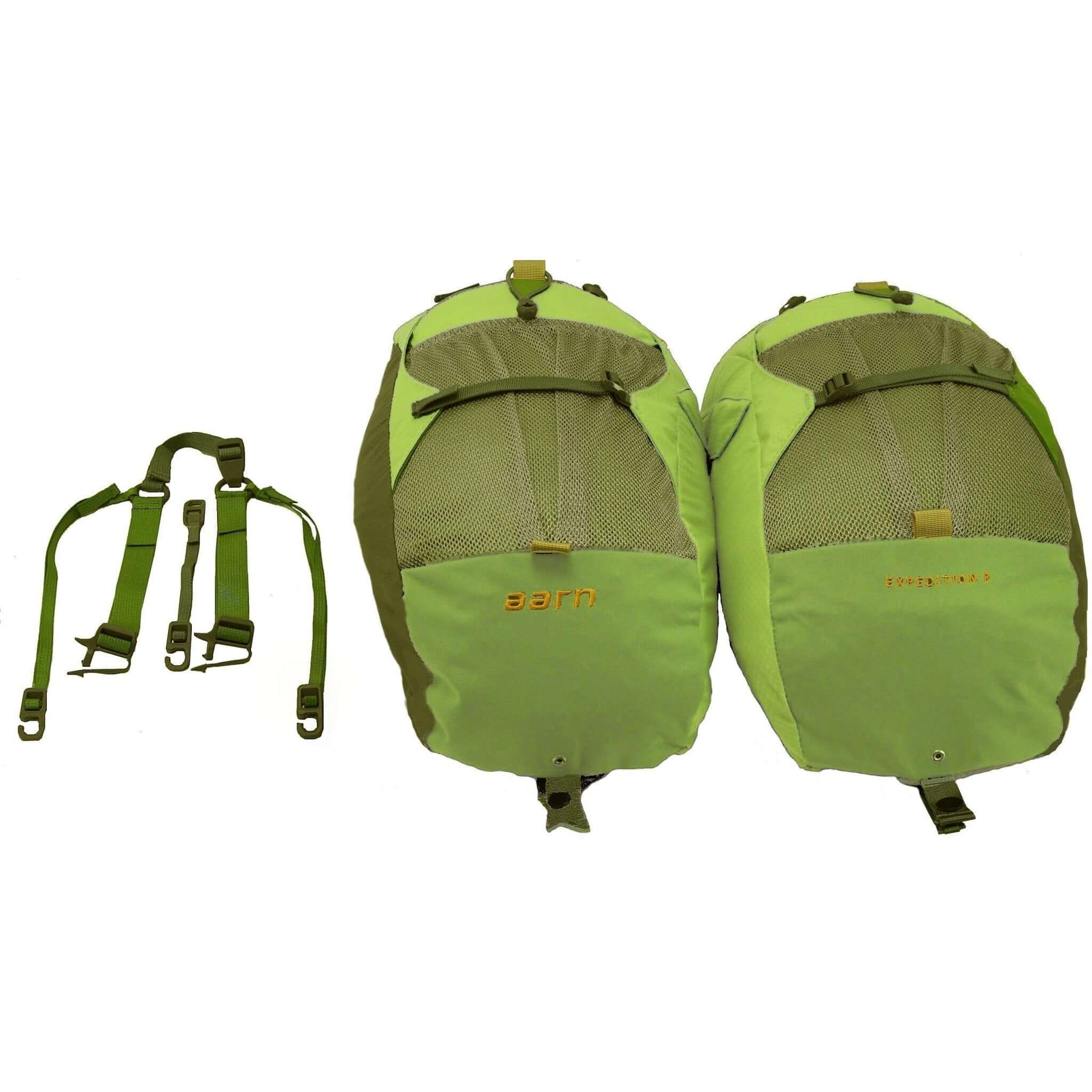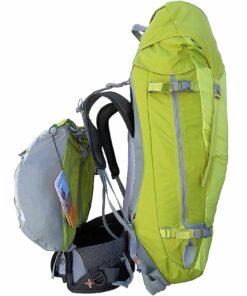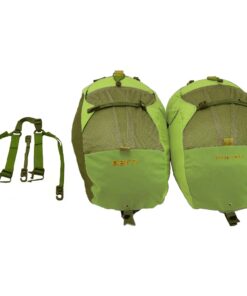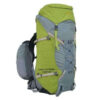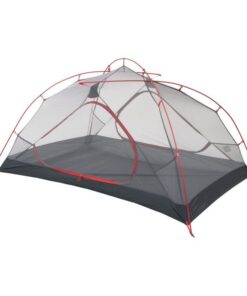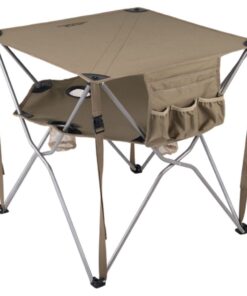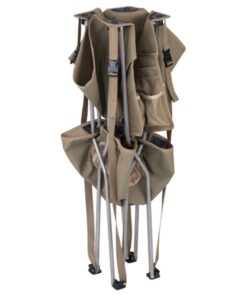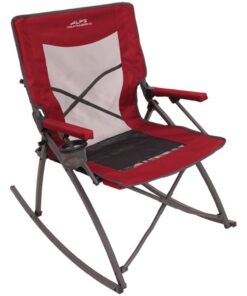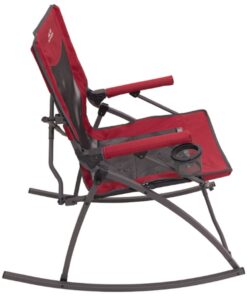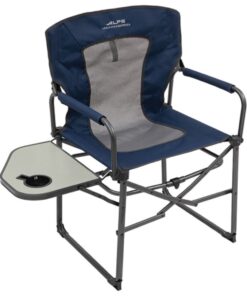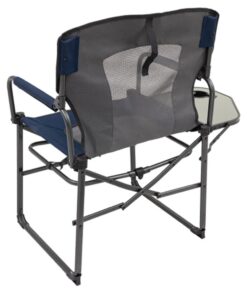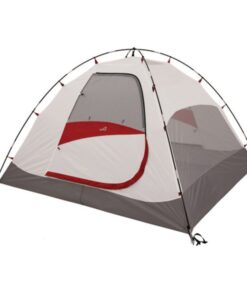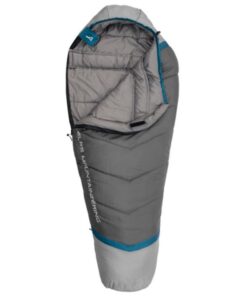Aarn Guiding Light 57-65 Liter Backpack – Light Hiking Gear by Light Hiking Gear
$98.99
-
Returns & Exchanges within 30 daysAny return for unsatisfied item(s) is available in 30 days
-
Worry-Free ReturnsSeller covers return shipping
-
Money Back GuaranteeA full refund within one week upon receiving your return
-
3-Month WarrantyCovering any possible defect in materials and workmanship
Fulfilled by our friends at Light Hiking Gear
Developed with NZ climbers in mind and optimized for climbing, skiing, and hiking with trekking poles, the Aarn Guiding Light balance pack allows dynamic movement and superb ability to go just about anywhere, and the Flow Motion harness system is built for maximum agility and performance.

Jenny Loe – John Muir Trail, 2017
FEATURES
Guiding light is one of the best hiking backpacks in that it allows you to stow or remove tools without taking the pack off. The Rope Door located in the section behind your head allows you to put in or roll out rope as needed. It doubles as a hydration port, with an easy access loop for holding your hydration bladder. The Tool Quivers on the sides are great for attaching skiing equipment or for accessibility to ice tools, snow stakes, avalanche probes, trekking poles, and compact tripods for photographers.
Add Balance Gear Racks (see Options tab) to this comfortable backpack to take the weight of climbing hardware off your shoulders when climbing. The new generation 4 model has a revised frame which is lighter & stronger and an improved Multi-Flow pivot position for an easier-to-use hipbelt.
- Pack features two backlengths, each of which can be adjusted up to 15cm, and a Pelvic Form Hipbelt, making the pack usable for people of all shapes and sizes.
- U, Free, Multi, and Flexi-Flow design plus Free-Flow shoulder straps make the backpack exceptionally comfortable, while the several pockets and make organization easy.
SPECIFICATIONS
Volume |
Gallons |
Liters
|
| Short Backlength | 15.1 |
Pack: 57 |
| Long Backlength | 17.2 |
Pack: 65 |
Dimensions |
Inches |
Centimeters |
| Short Backlength |
Height: 27.6 Width: 15.7 Depth (front-back): 9.8 |
Height: 70 Width: 40 Depth (front-back): 25 |
| Long Backlength |
Height: 31.5 Width: 15.7 Depth (front-back): 9.8 |
Height: 80 Width: 40 Depth (front-back): 25 |
Weight |
Pounds (without/with dry Liner) |
Kilograms (without/with dry liner) |
| Short Backlength | Pack: 3.86 / 4.12
Balance Pockets: 13.6 oz |
Pack: 1.75 / 1.87
Balance Pockets: 386 grams |
| Long Backlength | Pack: 4.23 / 4.37
Balance Pockets: 14.7 oz |
Pack: 1.92 / 1.98
Balance Pockets: 416 grams |
Key Fabrics: 500D Kodura nylon; 210D, 40D ripstop nylon
Color: Green/grey
Recommended maximum load (pack only): 43 pounds (19 kg)
BALANCE POCKETS
Front Balance Pockets allow for high weights without feeling intrusive
The Front Balance Pockets attach easily to Light Hiking Gear__ comfortable backpacks and convert easily into a daypack after clipping on the shoulder and sternum straps. Hiking, backpacking, and exploring the outdoors has never been easier!
- Comes with either 10 or 12 liter front Sport-Regular Balance Pockets, or 15 liter or 18 liter Expedition Balance Pockets. Pockets provide greater stability and balance, and a more upright posture.This translates to much less fatigue and strain.
- Shoulder and sternum straps are included for converting the pockets into a daypack, which is carried on the front of the body for maximum security and easy gear access.
- Front pockets have waterproof Dri-liners, accessible zip flaps to protect items from the rain, and four mesh exterior pockets with compression cords.
- The design of the Front Balance Pockets, which includes four mesh exterior pockets with compression chords, is to provide maximum comfort, organization, and accessibility. Attach to the Light Hiking Gear bodypack for an unmatched outdoors experience.
- Material: 00D Kodura, 210D, 100D x 70D & 40D ripstop nylon
- Color: Green/Grey
Sport Balance Pockets – Mid-volume balances unobtrusiveness and weight carrying ability

Expedition Balance Pockets: Large volume handles heavy loads up front

DESIGN


OPTIONS
(click on button to evaluate and purchase options)
These allow you to clip climbing hardware on the larger models with Pelvic Form Hipbelts.
Alternative to sternum straps when Balance Pockets are not used.
REVIEWS
Carryology, December 12, 2014, by Rick Lee
see:
Hopefully you__e had a chance to check out our recent with Aarn Tate, the talented inventor and designer of Aarn packs. His bags are filled with clever engineering tricks keep reading, they__e awesome but his main battle cry is for better ways to carry trekking bags. Enter the word bodypack. It__ not a fancy word but it__ a radically rational idea that could revolutionise the way we carry large packs in the backcountry.
Bodypacks are designed to distribute the weight you__e carrying in the front as well as in the back; simple, right? This balanced approach allows you to stand up straight and fully rest the load onto your hips bye-bye bruised shoulders. Having some of your kit on the front also gives you very welcomed access to more gear than you__e used to having access to on the trail: camera, water bottle, whiskey flask whatever you desire.
Aarn is a New Zealand brand with a surprisingly large range. They__e got everything from expedition packs you__ imagine wearing on your way to Everest Base Camp to marathon-running bags for the cool ultra-marathon runners who are looking to shed weight but not features. Wed love to test the whole range but today well be taking an in-depth look at the Guiding Light with Expedition front balance pockets.
Bodypacks are designed to distribute the weight you__e carrying in the front as well as in the back.
The pack and balance pockets accompanied me on a backpacking trip through Nepal for two weeks. It was my main bag and provided more than enough storage space and a few interested looks from the locals. They were either shocked to see someone walking so upright with a bag on their back or they thought I looked strange with the balance pockets carried on the front at the same time. Either way I was happy to be so comfortable carrying a pack.
Who It Suits
This specific bag and balance pocket combo is best suited to someone who is doing technical backcountry trips or often hikes with poles. Its designed with the NZ backcountry guide in mind who may need to cross glaciers, climb mountains, and ski back down all in a single trip. This pack is for you if you__e ever thought, I wish I had a handy spot to store my ice axe so I can free up my hands!
Who It Doesn__ Suit
If you have an aversion to green you__l have to get over it or go somewhere else. For now the mossy green colour is the trademark colour of Aarn packs. It also doesn__ suit the person who wants a pack that they can pick up and use the same day with little thought. Aarn packs are cleverly designed – so clever in fact, that you__l need to watch some YouTube videos to help you figure it all out. Getting the bag fitted is not trivial and Id highly recommend spending the time in store with a trained rep to get the bag fitted correctly. The time spent there will pay dividends latr.
The Good
The Guiding Light is not your average trekking bag. Its designed for climbing, skiing, and any trip where you__l be bringing some tools (read ice axe, not screwdriver). It has tool quivers on the sides, a rope door behind your head, and a thin profile to better keep weight close to your body. You ask, __ait, did you say rope door?_ Yup, there__ a special zippered flap that gives access to the main compartment where you can keep your climbing rope (it also doubles as a hydration port for those of us who don__ have a need for a rope door). The Guiding Light comes in a small 57 litre and a large 65 litre size. With optional balance pockets for your front carry you__l be able to add up to 20 litres of extra storage. That brings the overall volume to 85 litres, which is plenty large for a multi-day overnight pack.
The detachable balance pockets convert into a very basic backpack, which came in handy a few times when all I needed was a day bag in Nepal. The comfort of the Guiding Light is like no other I__e tried. Usually when carrying a backpack I assume a lean forward stance to balance out the weight on my back, causing the shoulder straps to put pressure on my collarbones. To counter this most shoulder straps are heavily padded; however, the Aarn shoulder straps were surprisingly thin and light because the balanced approach rests most of the bags weight on your hips.
The detachable balance pockets convert into a very basic backpack, which came in handy a few times when all I needed was a day bag in Nepal.
The hip belt is quite clever with dual compression straps, one high and one low. This allowed me to tighten the belt up so that it really hugged the crests of my hips. Aarn even put an extra-spongy material exactly where the front of your hip bone usually gets abused by your hip belt. After carrying it on the trail for 5 days I couldn__ find a single bruise, not even a sore spot; that__ impressive.
Aarn__ engineering genius was most apparent in the shoulder straps and the way they connect to the bag. It__ a patented system called Flow, designed to allow shoulder and hip belt movement independent of the main pack. The shoulder straps on the Guiding Light have what Aarn calls Free-Flow and U-Flow. With Free-Flow the stabiliser straps that come off the top of the shoulder straps are attached freely to vertical stays instead of directly to the pack. This allows them to slide up and down, automatically adjusting how much tension is needed. U-Flow handles the way the lower end of the shoulder straps are attached to the bag, or in this case attached to each other. Instead of attaching to the bag they are actually linked together through a slot in the bottom of the bag.
In practice this means if you lean left your right shoulder strap will get longer and your left shoulder strap shorter so that the shoulder suspension system essentially pivots. This keeps the bag in a more stable upright position as you waddle your way down the trail. It__ hard to explain and even takes a few minutes to grok in real life, but trust me when I say my mind was blown in a good way. But that__ just one aspect of Aarn__ entire Flow System, see it explained in its entirety .
The Not So Good
This bag may outsmart you. The engineering of Aarn packs is so clever that it can be confusing at times. While I was in Nepal, I had to google how to convert the balance pockets into a backpack because I couldn__ remember how to do it.
The other drawback, if you__e a style-conscious person, is that you likely won__ be invited to model your bag on the runway. Be prepared to get teased a bit for wearing part of your bag on your front, it does look weird. If your goal is to look fashionable on the trail you__l want to look elsewhere, but if you want to impress people with a cleverly designed bag then look no further.
Niggles
Getting the bag on and off is more involved than what I__ used to. On the trail the number of times you need to do this is mitigated by having the easily accessible balance pockets on your front. While travelling though it__ a nuisance. I would generally try to keep the balance pockets empty and inside the main pack while travelling for convenience.
This bag may outsmart you. The engineering of Aarn packs is so clever that it can be confusing at times.
I would have liked to have some colour options when choosing the bag but it certainly wasn__ a deal breaker.
Other Bags to Consider
The world of trekking packs is plentiful, but none of them are like Aarn.
Perhaps the best alternative is to buy just the balance bags from Aarn, and attach them to your existing pack.
Other brands sell gear pockets that can also clip to your front, but these don__ stand the weight up from your hips the way Aarn does.
Verdict
If you are a serious backpacker who plans on doing some lengthy hikes you should definitely consider the Guiding Light or one of Aarn__ other large-load bags. The comfort afforded by better distributing your carry weight is phenomenal. Another reason to check them out is that if you find yourself regularly accessing your backpack on the trail to get items out of your bag, you will find having balance pockets on your front a welcome addition to your backcountry carry setup. There are many different balance pockets to choose from including ones specifically designed for cameras.
The comfort afforded by better distributing your carry weight is phenomenal.
Aarn packs are very well engineered and are light. Id highly recommend checking them out in store if you are lucky enough to be near a retailer; if not then it__ probably worth ordering one for yourself to see what all the fuss is about.
TESTIMONIALS
“The climbing community has not yet fully embraced your designs – climbers always comment on my pack and ask me how I find it. I just came off a guide’s course and all the other guides were most intrigued, saying I was the first person they had met who used one. There is a misconception that you can’t walk on rough ground (the thought being that you can’t see your feet) and people don’t understand that the front packs are removable, leaving a compressible lightweight pack for steep climbing.
I’ve found the pack great! I’ve had trouble with my back for years and the difference in pain and muscle tension on long trips with heavy loads was very noticeable straight away. I walk much more upright under a load and find traditional packs horribly uncomfortable now. I’ve taken the pack on transalpine crossings, to Antarctica and up plenty of peaks and technical faces (recently up the South Face of Mt Cook). I was also happy to find a kiwi-designed pack that is made of lightweight materials and not canvas. The pack’s suffered some wear and tear but that is the trade-off with lightweight fabrics I guess. I also really like the tool quivers – they are very useful for quickly stashing a snow stake.
Penny Goddard, Christchurch, NZ (one of NZ’s top female climbers)
“Hi, Just wanted to say a HUGE thankyou! I recently bought a Guiding Light with Expedition Balance Pockets and took it on 5 days of tramping in NZ. I can honestly say that it is the most comfortable pack I have ever worn and the weight is truly on the hips as advertised. I walked faster, I was definitely more upright and did not suffer shoulder/ back pain- it was a delight! I am very satisfied customer who is already raving to everyone I meet about Aarn packs!!”
Liz Rode-Bramanis, Shell Cove, NSW, Australia
“Carrying the Guiding Light with week__ worth of food and a comprehensive climbing rack (30 kgs) up the Hooker Glacier recently, I was more nimble and better balanced than my climbing companions. While the walk in was hard work, I had no sore shoulders or hips. When the crevasses required us to do two-tool climbs, the Flow Motion system allowed me to swing my tools above my head without restraint. The Balance Pockets were quite manageable in this terrain and I found them comfortable and very convenient. Camera, muesli bars and water bottle were all within easy reach. Once at the climbing base the Balance Pockets were easy to remove for the climb, reducing the carried weight.
I used the slots on the hipbelt to attach Ice Clippers. With the firm location of the clips on the hipbelt, retrieving gear was quick, easy & reliable. On the long sections of glacier travel, the bulk and weight of ice screws and other rock protection was more comfortable on the hips than on my shoulders from a gear sling.
Using the built-in tool quivers on the sides of the pack, I was able to single-handedly stow and retrieve ice tools and snow stakes. This is extremely useful where it is too precarious to take the pack off. I was recently working my way up a mixed rock and ice 55 gully with tools stowed. Whilst bridging the gully with my crampons on rock, I was able to use one hand to maintain balance, and the other to retrieve my snow stake and ice hammer from the pack, install the desired anchor, re-stow ice hammer and continue”.
Vaughn Snowdon, Christchurch, New Zealand
Great new review on Guiding Light on carryology.com. It includes an excellent video showing how the Flow Systems allow the body to move while the pack remains stable on your back.
See:
FITTING
Troubleshooting
|
PROBLEM |
CAUSES |
SOLUTIONS |
|
Sore Shoulders |
Pull back force on shoulders from weight behind |
Add Balance Pockets, or if using them, put more weight in them and loosen front shoulder strap webs |
|
Too much weight on shoulders |
Loosen front shoulder strap webs |
|
|
Hipbelt has slipped down |
Raise hipbelt & retighten &/or shorten |
|
|
Balance Pockets are pulling down on bottom of shoulder pads |
Increase back length: Pull up on navy top back panel web |
|
|
Bodypack is too hard to put on |
Incorrect technique used |
1. Loosen hipbelt webs before putting the bodypack on for the first time. |
|
2. Follow this sequence: Place hands underneath Balance Pockets; grab hold of hipbelt center buckles, lift both Pockets & hipbelt up to the right height; clip center buckle together & tighten the tension web loop at top and bottom to get an even pressure at the top and bottom of the hipbelt |
||
|
3. When taking the pack off, before releasing the hipbelt center buckle, loosen the side buckles. With familiarity, you can release the 2 tensionlock buckles on each side with each hand simultaneously, by pulling the buckle ends up. Now you have set the pack up to be easy and quick to put on next time |
||
|
I do not have the coordination anymore to master this simple sequence |
Substitute Universal Balance Bags for Balance Pockets. These quickly and easily attach after you have put the pack on |
|
|
My pack leans to one side |
Your pack will lean to one side, like any brand of pack, if you have the shoulder straps and/or hipbelt adjusted unequally on both sides, or you have loaded the pack unevenly. |
First check that the top stabilizer straps are equal length and the front shoulder strap webs are also equal length. Now check that the hipbelt parts are adjusted to equal length and angle on both sides of the center base plate and the side tension adjustors (cord or web) are of equal length both sides. Now with all these adjustments made, check that the hipbelt ends are sitting at a similar position on each side of your pelvis with the pack on. Finally, check that your U-Flow movement (the movement when you lift one shoulder), is equal on both sides. With everything centered, including the load, there should be no reason for your pack to lean to one side. |
Related products
category 3
category 3
category 3
category 3
category 3
category 3
category 3

